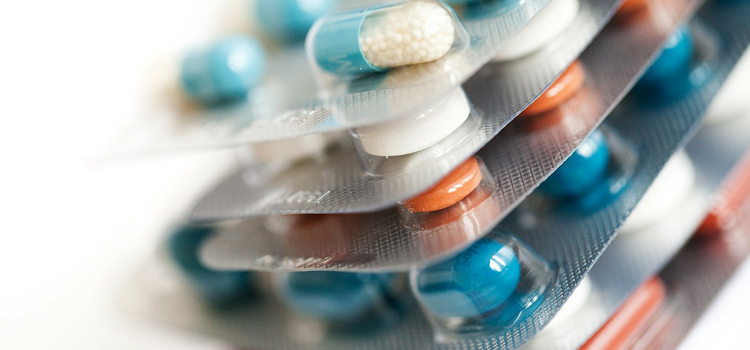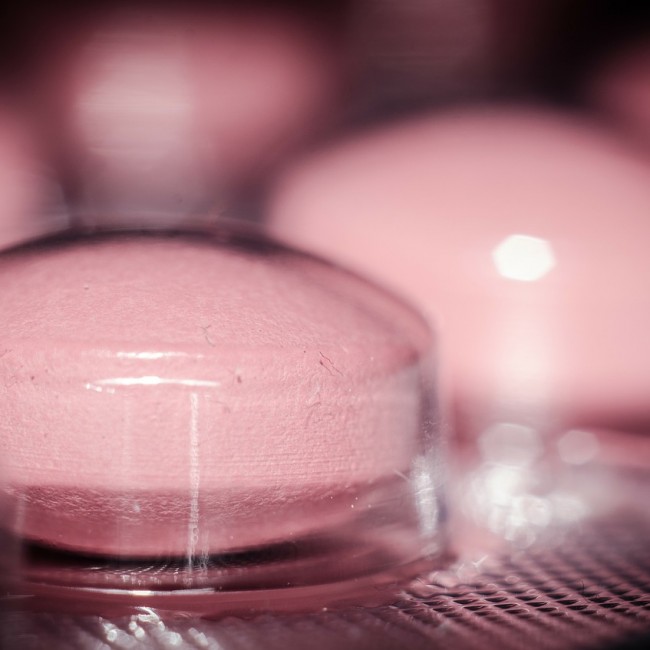
A known repercussion of heavy weightlifting, like most sports, is getting sore and hurt. Thus, non-steroidal anti-inflammatory drugs (NSAIDs) such aspirin, ibuprofen, and naproxen have become a part of many people's daily regimen. If you’re like most people, you simply pop a few tablets in your mouth and go on your merry way. However, I personally like to know what any substance I put into my body does—either good or bad. This article is a brief explanation of the actions of NSAIDs, and the interesting debate on whether or not they can negatively affect protein metabolism.
What They Do
NSAIDs work by blocking the actions of an enzyme called cyclooxygenase (COX). There are several isoforms of COX: COX-1, COX-2, and COX-3. COX-2 is considered to be the most important physiologically and is largely studied. However, COX-1 is the form that occurs most often in skeletal muscle. COX works by acting on arachidonic acid and catalyzes a reaction which causes the formation of a specific prostaglandin. Each specific type of prostaglandin works in either an autocrine (on the cell) or paracrine (nearby cells) fashion to elicit its effects on specific receptors. Prostaglandins are messengers that lead to a myriad of effects throughout the body. Most notably, prostaglandins signal for inflammation, which is where NSAIDs get their claim to fame. Most of the over the counter NSAIDs you buy are non-specific COX inhibitors, so they block all of the before mentioned isoforms. By blocking cycloxygenase, you are blocking the enzymatic response for prostaglandin production—thus, stopping inflammation. Acute inflammations cause pain, swelling, decreased function, and all of the nasty stuff we do not want before or after a workout. This all sounds wonderful, right?
NSAIDs and Protein Metabolism
Studies performed in the 1960s demonstrated that prostaglandins were present in skeletal muscle and that they increased during and after exercise (Karim et al. 1967, Herbaczynska-Cedro and Staszewska-Barczak 1974, Herbaczynska-Cedro et al. 1976). It was later demonstrated that prostaglandin supplementation was able to increase protein synthesis in an in vitro study involving rat skeletal muscle (Rodeman & Goldberg 1982). This effect was decreased with the use of a COX inhibitor. This appears to lead to an apparent dilemma. NSAIDs are useful in that they block prostaglandin production (and thus decrease pain and inflammation), but if prostaglandins are also involved in skeletal muscle protein synthesis, what would happen to muscle growth if NSAIDs are used chronically?
The over the counter drugs acetaminophen (4g/day) and ibuprofen (1.2g/day) significantly negated resistance training-induced increases in prostaglandin production and protein synthesis 24 hours after a single strenuous resistance training session (Trappe et al. 2002). This same effect on protein synthesis has even been shown to occur when taking a NSAID as early as 16 hours prior to an exercise session (Boushel et al. 2002).
Perhaps more important are the potential long-term effects that NSAIDs may have on muscle growth. Interestingly, training studies involving COX inhibitors appear to have no negative repercussion in younger subjects, and even have been shown to elicit some enhancements in older subjects. Young individuals, who were divided into a control group and a study group, underwent a biceps training program consisting of three sets of concentric repetitions and three sets of eccentric repetitions. The study group was given a low dose of ibuprofen (400 mg/day) while the control group remained non-medicated. In total, the study lasted six weeks. After those six weeks, the researchers found that there was no difference between the group given ibuprofen and the control group in terms of muscle growth (Krentz et al 2008).
There may be an enhancement of muscle growth and strength in older individuals. In a 12-week study, healthy men and women (ages 60-78) where given either acetaminophen (4 grams/day) or ibuprofen (1.2 grams/day), and they were trained three days per week (Trappe et al.). The group using NSAIDs increased muscle mass and strength by 25 to 50 percent compared to the control group.
In a review paper on the topic, Trappe and Liu (2013) hypothesized that this increase may be explained by follow-up studies using muscle biopsies (Trappe et al. 2011). This data suggests a specific type of prostaglandin PGE2 which is up-regulated through the typical cycloxygenase pathway after exercise has been shown to stimulate production of Interlukin-6 (IL-6) and Murf-1. Both of these are typical inflammatory responses in the body. IL-6 can inhibit protein synthesis and negatively influence muscle growth. Murf-1 has also been shown to do some nasty things to muscle as it is proteolytic. Trappe and Liu also state that this down-regulation of PGE2, along with a training-induced increase in intramuscular COX-1 and apparently muscle-friendly prostaglandin PGF2α, may be beneficial to muscles. Lastly, it appears to be unclear if this effect is specific to older individuals, perhaps due to an exaggerated inflammatory response that may occur after exercise with aging.
So, what can we take from this? In an acute sense, NSAIDs appear to negatively influence protein synthesis. However, there may be a net increase in protein synthesis due to the ability of the NSAIDs to block production of IL-6 and MURF-1, which both would facilitate muscle breakdown. Now, this has been shown in older individuals, so it is unwise to jump to the conclusion that this would have a positive effect in younger individuals as well. At this present moment, I am unsure if NSAIDs would have a positive or negative influence on muscle growth, but it is important to take into consideration that NSAIDs, like all drugs, affect the body in a multitude of ways. So, before you start popping pills, perhaps you should ask yourself, "how bad does it actually hurt?"
References
- Boushel R, Langberg H, Gemmer C, Olesen J, Crameri R, Scheede C, Sander M, and Kjaer M. Combined inhibition of nitric oxide and prostaglandins reduces human skeletal muscle blood flow during exercise. J Physiol 543: 691-698, 2002.
- Herbaczynska-Cedro K, and Staszewska-Barczak J. Proceedings: Muscular 562 work and prostaglandin release. Brit J Pharm 52: 454P-455P, 1974.
- Herbaczynska-Cedro K, Staszewska-Barczak J, and Janczewska H. Muscular work and the release of prostaglandin-like substances. Cardiovasc Res 10: 413-565 420, 1976.
- Karim SM, Sandler M, and Williams ED. Distribution of prostaglandins in humans 593 tissues. Br J Pharmacol Chemother 31: 340-344, 1967.
- Krentz JR, Quest B, Farthing JP, Quest DW, and Chilibeck PD. The effects of ibuprofen on muscle hypertrophy, strength, and soreness during resistance training.Appl Physiol Nutr Metab 33: 470-475, 2008.
- Rodemann HP, and Goldberg AL. Arachidonic acid, prostaglandin E2 and F2α influence rates of protein turnover in skeletal and cardiac muscle. J Biol Chem 257:720 1632-1638, 1982.
- Trappe TA, White F, Lambert CP, Cesar D, Hellerstein M, and Evans WJ. Effect of ibuprofen and acetaminophen on postexercise muscle protein synthesis. Am J826 Physiol Endocrinol Metab 282: E551-556., 2002.
- Trappe TA, Carroll CC, Dickinson JM, LeMoine JK, Haus JM, Sullivan BE, Lee JD, Jemiolo B, Weinheimer EM, and Hollon CJ. Influence of acetaminophen and ibuprofen on skeletal muscle adaptations to resistance exercise in older adults. Am J Physiol Regul Integr Comp Physiol: R655-662, 2011.
- Trappe, T. A., & Liu, S. Z. (March 28, 2013). Effects of Prostaglandins and COX Inhibiting Drugs on Skeletal Muscle Adaptations to Exercise. Journal of Applied Physiology.











1 Comment